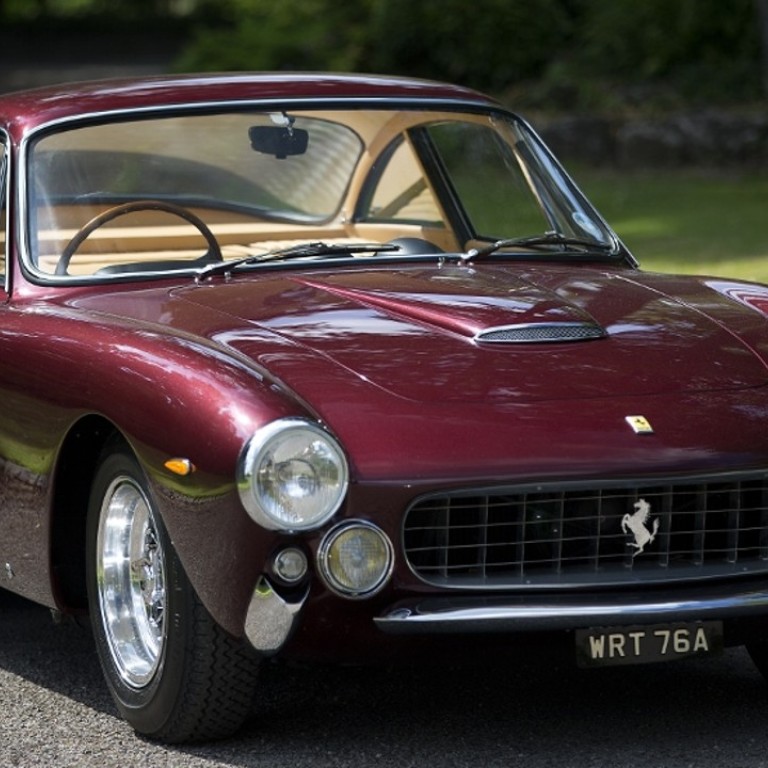
Car designers ‘have to be in China now’, says Pininfarina chairman
Paolo Pininfarina, whose grandfather founded the Italian car design house, talks heritage, electric bikes and brand-building in China
Paolo Pininfarina says it’s not enough to do things in a new way.
“You have to be relevant too,” says the 58-year-old engineer, designer and chairman of the Cambiano-based automotive styling house, Pininfarina.
Businesses must also meet the unexpected, he adds.
Founded by his grandfather, Battista “Pinin” Farina, in 1930, the Milan-listed company has created the look of almost every Ferrari since the 1950s, and shaped many Fiats, Lancias and Alfa Romeos. However, the design house’s latest product is a bicycle.
The likes of bicycles are going to be crucial for how we get around cities in the future
“Yes, it is a bit surprising from us,” Pininfarina says at the alloy electric bike’s launch in March at the company’s headquarters, about eight kilometres southeast of Turin. “But the likes of bicycles are going to be crucial for how we get around cities in the future.”
Called the E-voluzione, the award-winning, 16kg electric bike was created in collaboration with Dutch specialist maker Diavelo, a unit of Accell Group. The carbon-framed E-voluzione has a 500W battery, a high torque German Brose motor, and is fitted with hydraulic disc brakes and Shimano components.

“Our shift from manufacturing to a focus on design has created problems that have taken years to sort out,” he explains. “[But] the family now can focus on that vision, with the management to execute it. Now we have the finance to make things happen.”
If you’re going to play in the field of auto design, you have to be in China now
There was ample evidence of the design house’s renewed drive at last month’s Shanghai Auto show. Hybrid Kinetic Group (HKG), a Hong Kong-listed developer of electric vehicles and proprietary micro-turbine generator battery technologies, showed the Pininfarina-designed H600 luxury sedan that it had launched in Geneva in March. It also presented two electric-drive sport utility vehicle concepts, the five-seater K550 and the seven-seater K750. Such high-tech models point to Pininfarina’s future. In February, HKG and Pininfarina signed a €65 million, 46-month collaboration agreement.
In fact, Pininfarina has had a design presence in the mainland since 2010, with a multicultural team of 20 at Pininfarina Automotive Engineering Shanghai.
“We’ve recognised that China is the world’s biggest automotive market and that it was going to be essential for us to be there,” Pininfarina explains. “There are 20 million cars sold there every year – if you’re going to play in the field of auto design, you have to be in China now.
“The interesting thing though is that, being a new market, it’s much less limited by ideas of heritage. It’s more about innovation – you can invent new brands, new sectors. You can design and make a car that leads to a whole new market. It’s terrifically exciting.”

Early this year saw the unveiling of South East Motor’s DX3 Compact SUV, styled by Pininfarina – the latest of a range of vehicles with the design house’s touch, due for launch over the next five years. Small wonder that, at his last count, Pininfarina claims to have had a hand in the design of about 600 cars.
He explains Pininfarina’s popularity in China.
“The engineering quality of Chinese cars will be a given I think, so it’s style that is going to make the difference – and Italian style is in demand because its appeal has been so widely demonstrated,” he says. “Everyone knows Ferrari, including in China.”
Pininfarina also wins business because it has a disciplined eye for a line, its chairman says.
“It’s fortunate for us that car design around the world is, frankly, getting worse,” he adds with a laugh. “Every year, I go around Geneva and the other big car shows, and I look for elegance. And it seems that this is something very, very few car brands can now pull off.
“Elegance has become an exception. It seems that there is a belief that to sell a car these days you have to do something crazy or aggressive.”
Not so, the company that designed the classic Ferrari 275 GTB4, Dino 246 GTS, the 250 GTs, Fiat 124 Spider Europa Volumex, BMW Gran Lusso Coupe and the Maserati GranCabrio. Pininfarina has also designed kitchens, skyscrapers, pens and the first flexible door. However, cars remain the company’s most complex and rewarding activity, Pininfarina says.
So he’s thrilled to be in at the start with the new generation of Chinese carmakers. They are going to be big news, he says.
“Asian companies have this ambition,” he says. “Of course, they have this huge domestic market they can sell to to start with. But once that’s saturated, they will quickly want to export, as Japanese makers did, and Japanese products are among the best. There’s no reason why Chinese cars won’t be considered just the same.”
Especially if they get a little help from some Italians.

